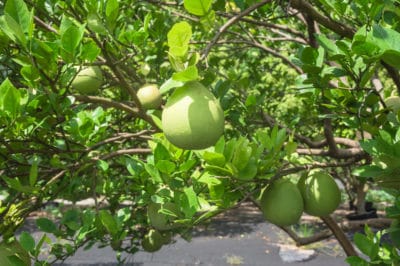Growing Your Own
Native to the tropics, guavas are very frost-sensitive, especially when young. If you live in USDA Zone 10 or have a sunroom or greenhouse, you may be able to grow your own. Site the tree in full sun and give it deep, fertile soil. Keep it well-watered – these are not drought-tolerant fruits. Fertilize during the growing months – which can be most of the year in the tropics.
Guava Varieties
Guava originated in Mexico, Central America and South America. The various varieties available come from areas like California, Hawaii, Florida and Mexico. Here are some possibilities:
- Beaumont – vigorous and productive
- Detwiler – sweet fruit, very good quality
- Hong Kong Pink – pinkish-red, smooth-textured fruit
- Red Indian – sweet, yellow flesh, very high in vitamin C
- White Indian – excellent flavor, white flesh.
Imported Fruit
If you are buying your fruit, there is an actual season for guavas. Since it grows mostly in the tropics, that season is the opposite of what it would be in the US – namely the winter months. Imported guavas usually show up in the stores around November. You can often continue to find them into April. Double check for ripeness when buying fruit as it will deteriorate quickly once ripe.
The Year Round Fruit
If you’re growing guavas in the tropical regions they prefer, they will blossom and set fruit more than once. In that instance, there isn’t really a season for the fruit. However, it generally takes about 20 to 28 weeks from bloom to mature fruit, so you’ll be able to estimate when the next crop of guavas will be ready. Some expert gardeners may also be able to duplicate tropical conditions in a greenhouse.
Manipulating the Season
Weather can certainly affect the season for guavas. If your region has cool or slowly warming springs, try to find a microclimate for your guava tree – and always plant in full sun. Since pruning affects flowering, it can also have an impact on fruit development. Unpruned trees usually don’t flower until fall. Pruned trees blossom about 10 to 12 weeks after pruning.
